Uncover the Rich History and Culture of Likeng Village
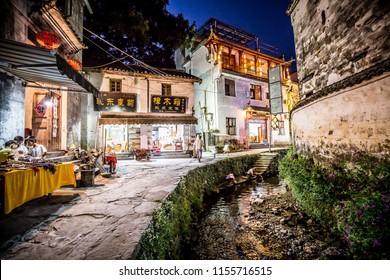
An Essential Guide to Visiting Likeng Village
In This Guide
- An Essential Guide to Visiting Likeng Village
- The Rich History and Legends of Likeng Village
- Main Highlights: What You Absolutely Can’t Miss
- Planning Your Visit: A Practical Guide
- Tickets: Prices, Booking, and Tips
- How to Get There: A Complete Transportation Guide
- Local Cuisine and Accommodation Nearby
- Frequently Asked Questions
- Final Thoughts on Your Trip
Nestled amidst the picturesque landscapes of Wuyuan County in Jiangxi Province, Likeng Village (婺源李坑) is a stunning embodiment of ancient Chinese culture and architecture. Often celebrated as one of the best-preserved ancient villages in China, it offers visitors a captivating glimpse into the past, where traditional craftsmanship and rich historical narratives converge. As you approach this enchanting village, a vibrant tapestry of canola flowers greets you, painting the fields with hues of yellow, particularly striking in spring.
Wandering through Likeng’s narrow, cobblestone streets, you will encounter beautifully preserved residences characterized by intricate wooden carvings and the distinctive Hui architectural style. Each structure tells a story of the affluent merchants who once inhabited the village, showcasing the opulence and artistry of a bygone era. Don’t miss the chance to explore the fascinating tales behind these historic homes, which reveal the social hierarchies and cultural values of feudal China.
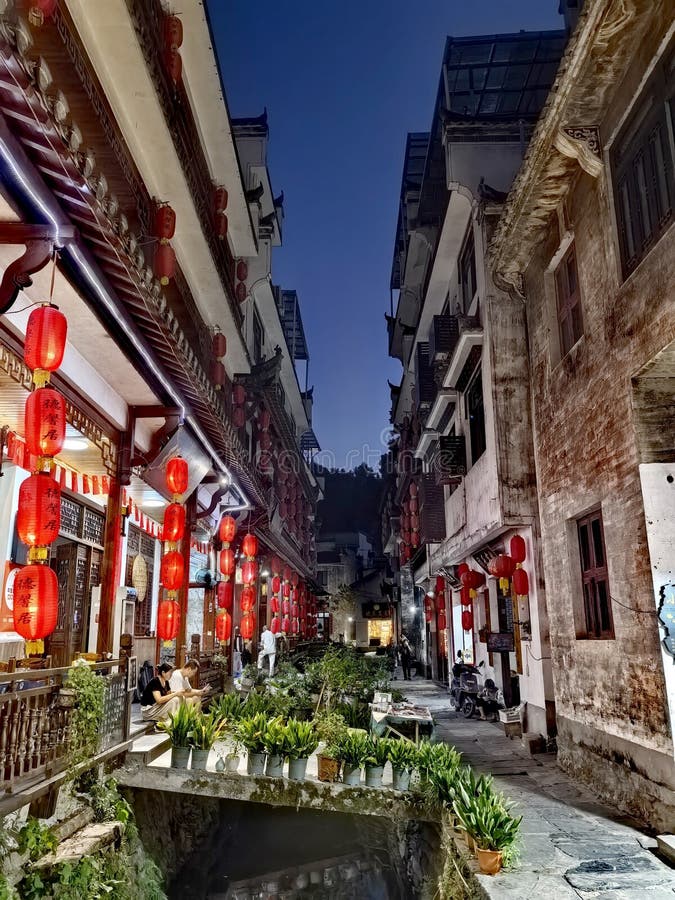
Likeng Village.
While Likeng is often bustling with visitors, its charm lies not only in its scenic beauty but also in its vibrant local culture. From engaging with skilled artisans to savoring traditional Jiangxi cuisine at quaint eateries, there is much to experience. However, it’s essential to embrace the village’s commercial aspects, which some travelers may find overwhelming.
In this guide, we’ll provide you with all the essential information for making the most of your visit to Likeng Village, including practical tips, historical insights, and recommendations on what to see and do, ensuring your journey is as enriching as it is enjoyable. Whether you’re an ardent history enthusiast or simply seeking a picturesque getaway, Likeng promises an unforgettable experience steeped in the beauty and heritage of rural China.

Likeng Village.
The Rich History and Legends of Likeng Village
Likeng Village, nestled in the heart of Jiangxi Province, is a living tapestry of Chinese history and culture, where the echoes of ancient merchants and their storied past reverberate through its picturesque streets. Often hailed as one of China’s best-preserved ancient villages, Likeng offers travelers an enchanting glimpse into the life of a bygone era, marked by its unique architecture, rich cultural heritage, and a host of fascinating legends.
A Glimpse into the Past
Likeng Village dates back to the Song Dynasty (960–1279), flourishing during the Ming and Qing Dynasties as a bustling hub for wealthy merchants. Its strategic location along trade routes allowed local merchants to thrive, leading to the construction of exquisite residences showcasing the architectural elegance of the Hui style. The intricate wooden carvings and harmonious layouts of these homes reflect the affluence and cultural values of the families who once inhabited them.
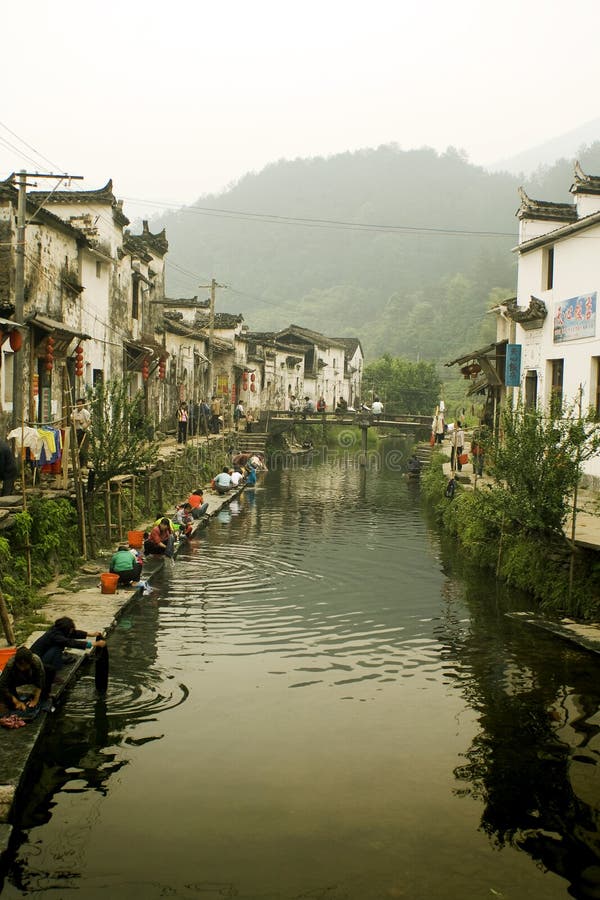
Likeng Village.
Architectural Marvels
- Hui Style Architecture: The buildings in Likeng are characterized by their grey brick walls, black-tiled roofs, and intricate wooden carvings. These architectural features not only illustrate aesthetic beauty but also serve practical purposes, such as fire protection and ventilation.
- Symbolic Carvings: Visitors will notice carvings depicting the Eight Immortals, symbols of good fortune and perseverance. One particularly amusing design includes a mouse, symbolizing abundance, as it signifies the wealth of the family who could afford to feed such a creature.
Legends of Likeng
The village is steeped in folklore, with tales that add a mystical layer to its rich history. One prominent legend involves a local merchant who, during the tumultuous times of the Taiping Rebellion (1850–1864), contributed a significant fortune to the imperial coffers in exchange for a noble title. The Empress Dowager recognized his financial support but subtly indicated that his status was distinct from that of scholarly elites, as evidenced by the design of his mansion’s steps, which were lower than those of his scholarly counterparts.
Another tale centers around the village’s ancient well, said to possess magical properties. Locals believe that the water can heal ailments and bring good fortune to those who partake of it. This well has been a gathering place for villagers for centuries, serving not only as a source of water but as a hub for social interaction and storytelling.
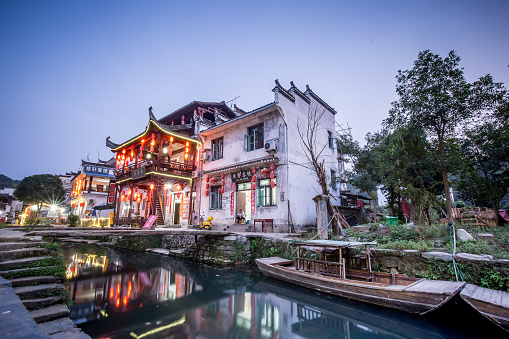
Likeng Village.
The Cultural Significance
Likeng is not merely a collection of old buildings; it is a vibrant community that continues to uphold its cultural traditions. The village hosts various festivals, celebrating agricultural milestones and honoring its ancestors. Visitors can often witness traditional performances, including folk music and dance, that bring the village’s history to life.
Moreover, the stunning landscapes surrounding Likeng, particularly during the blooming season when fields of canola flowers transform the terrain into a vibrant yellow canvas, enhance the village’s allure. This picturesque setting has made Likeng a favorite among photographers and nature enthusiasts alike.
Conclusion
With its rich historical background, captivating legends, and stunning architecture, Likeng Village stands as a testament to China’s enduring cultural heritage. It invites travelers to step back in time and explore the lives of the merchants who once thrived here. Whether you are wandering through its ancient streets or engaging with the local community, Likeng promises a profound connection to the past, making it a must-visit destination for anyone interested in the intricate tapestry of Chinese history and culture.

Likeng Village.
Main Highlights: What You Absolutely Can’t Miss
Discover the Allure of Likeng Village
Nestled in the picturesque landscape of Wuyuan County, Likeng Village (婺源李坑) offers a captivating glimpse into China’s rich cultural heritage. Often referred to as one of the best-preserved ancient villages in the country, this charming destination is brimming with history, stunning scenery, and unique local craftsmanship. Here’s what you absolutely cannot miss during your visit.
1. Stroll Through the Ancient Streets
As you enter Likeng, you’ll be greeted by a delightful blend of historical architecture and natural beauty. The village is characterized by its Hui-style buildings, featuring intricate wooden carvings and elegant arches that tell stories of the prosperous merchants who once inhabited them. Take your time to wander through the narrow alleys, where each turn unveils a new facet of traditional Chinese life.
2. Admire the Scenic Yellow Flower Fields
Before reaching Likeng, visitors are often enchanted by the vibrant fields of canola flowers (油菜花) that blanket the landscape in golden hues. Best viewed in early spring, these fields create a stunning backdrop for photographs and a perfect opportunity to soak in the serene countryside atmosphere.

Likeng Village.
3. Visit the Historical Mansions
Among the must-see sites in Likeng are the grand ancestral homes of wealthy merchants. Each mansion is a testament to the architectural prowess of the time, with elaborate designs and symbolic decorations. Notably, you can learn about the stories behind these homes, including one where a merchant was granted a title by the Empress Dowager for his monetary contributions during the Taiping Rebellion.
- Key Features to Look Out For:
- Intricate Carvings: Marvel at the carvings of the Eight Immortals and other symbolic figures that reflect the owners’ values and aspirations.
- Fire Protection Designs: Discover how the architectural designs incorporated practical features like water vases for fire safety.
- Historical Significance: Gain insight into the social hierarchy of ancient China, where merchants were often viewed with disdain despite their wealth.
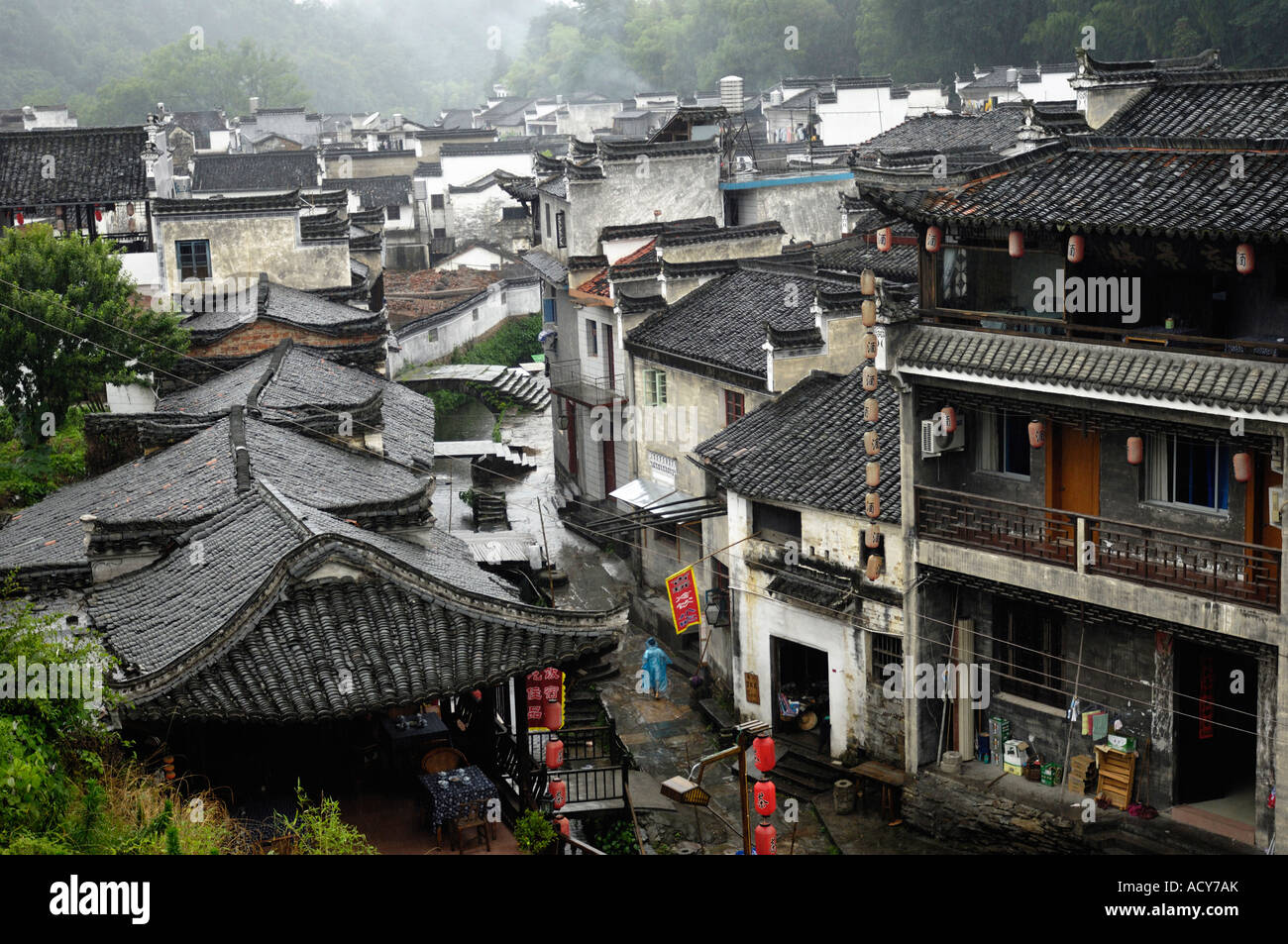
Likeng Village.
4. Experience Local Crafts and Cuisine
Likeng is not just about its historical allure; it’s also a hub for local craftsmanship. Explore the quaint shops selling handmade goods, from pottery to textiles. Don’t miss the chance to sample authentic local cuisine. Try dishes made with fresh ingredients sourced from the surrounding countryside, and perhaps indulge in a banquet at a local homestay for an immersive experience.
5. Engage with the Community
One of the most enriching aspects of visiting Likeng is the opportunity to interact with the local residents. Many villagers engage in traditional practices, whether it’s washing clothes by the creek or crafting unique artisan products. Engaging with them will not only enhance your understanding of their daily lives but also offer a personal touch to your travel experience.
6. Explore Surrounding Attractions
While Likeng is a gem in itself, consider extending your exploration to nearby sites. The Huangling Village is known for its breathtaking views and canola flower fields, and Xidi and Hongcun villages are renowned for their stunning architecture and idyllic scenery.
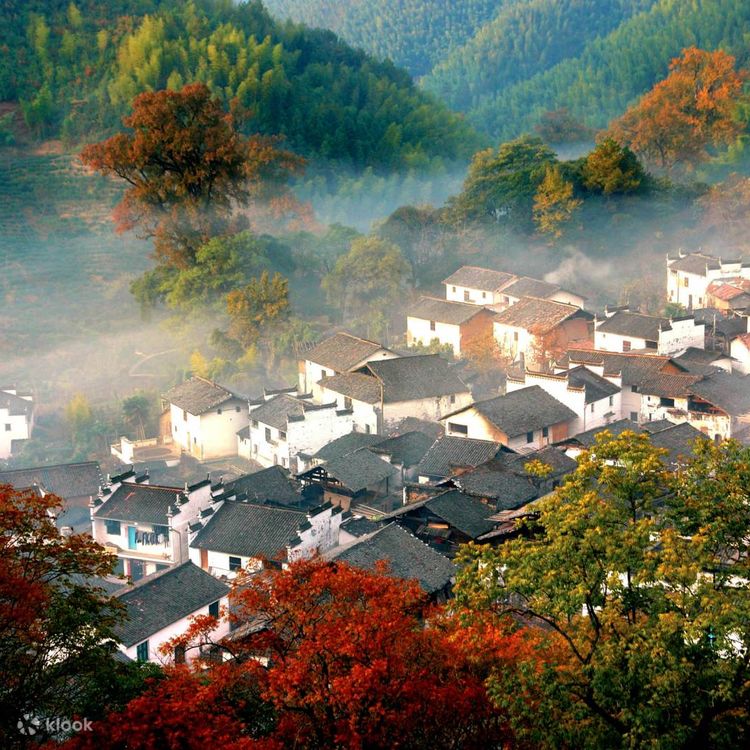
Likeng Village.
7. Plan Your Visit Wisely
To fully appreciate the charm of Likeng, timing your visit is key. The best seasons are typically spring and autumn when the weather is mild, and the scenery is at its most vibrant. Be prepared for a short walk from the parking area to the village, as vehicles are not permitted within the ancient streets.
Conclusion
Likeng Village is more than just a picturesque destination; it is a living museum that captures the essence of Chinese history and culture. Whether you’re drawn in by its ancient architecture, stunning landscapes, or the warmth of its community, Likeng promises an unforgettable experience that will resonate long after you leave. Don’t just visit—immerse yourself in the stories that this enchanting village has to tell.
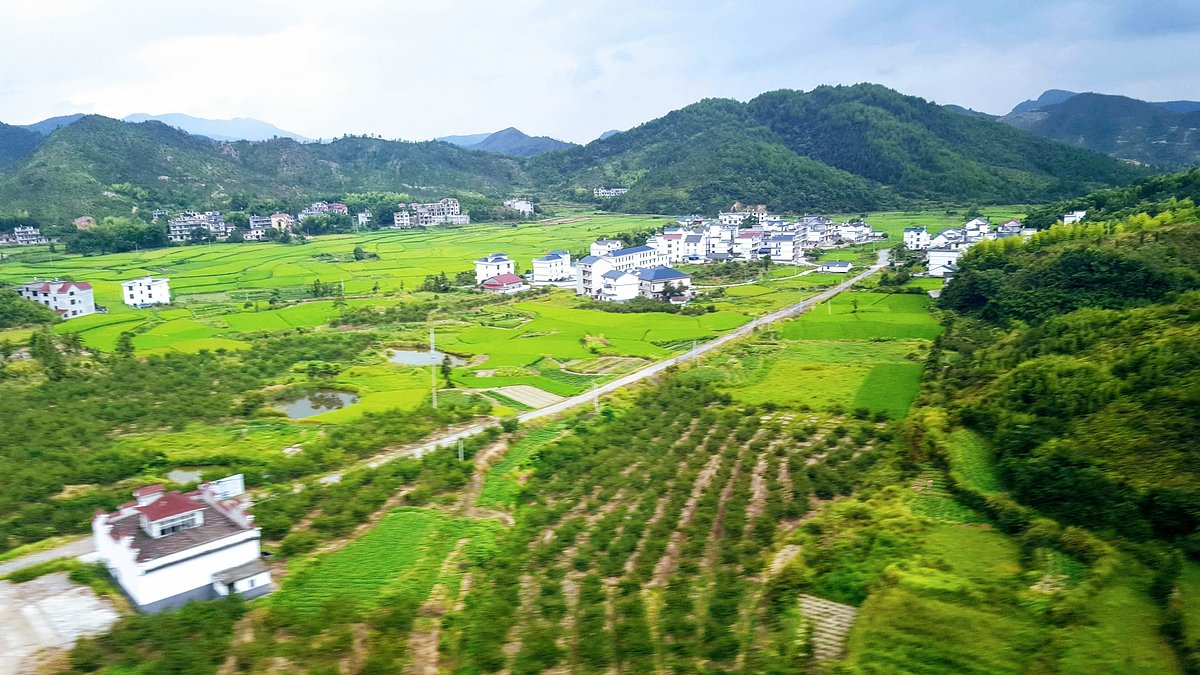
Likeng Village.
Planning Your Visit: A Practical Guide
Essential Guide for Visiting Likeng Village
Nestled in the picturesque Wuyuan County of Jiangxi Province, Likeng Village (婺源李坑) offers travelers a unique glimpse into China’s rich cultural heritage and architectural beauty. Renowned for its well-preserved ancient structures and stunning natural surroundings, this quaint village is an ideal destination for those eager to immerse themselves in Chinese history. Here’s everything you need to know to ensure a smooth and enjoyable visit.
Getting There
Location:
Likeng Village is approximately 16 kilometers from the downtown area of Wuyuan, making it relatively accessible by public transport.

Likeng Village.
Transport Options:
– Bus: Direct buses run from Wuyuan’s coach station to Likeng for a fare of around RMB 7. This is the most convenient option for most travelers.
– Taxi or Ride-Sharing: For a more personalized experience, consider taking a taxi or a ride-sharing service if available.
– Walking: For the adventurous, walking the 16 km from downtown Wuyuan to Likeng offers a chance to enjoy the serene landscapes along the way. However, be prepared for a lengthy trek!
Best Time to Visit
The village is stunning year-round, but seasons can greatly influence your experience:
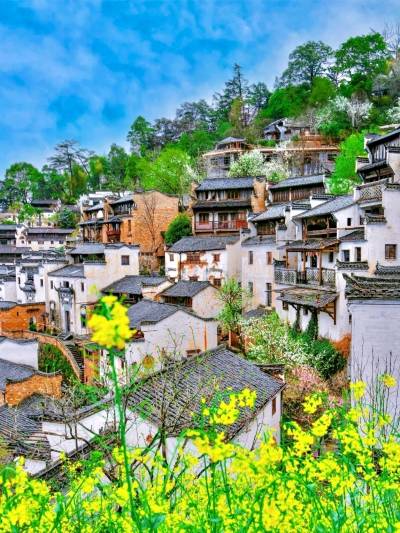
Likeng Village.
- Spring (March to May): Ideal for witnessing the vibrant canola flower fields in full bloom, creating a breathtaking backdrop for photography.
- Autumn (September to November): Offers a beautiful spectrum of colors as the leaves change, perfect for hiking and exploring the surrounding hills.
- Winter (December to February): A quieter time, but the serene landscapes can be quite enchanting.
Tip: The water levels in the village’s creek can vary, with some visitors suggesting that spring or autumn might offer the best conditions for visiting.
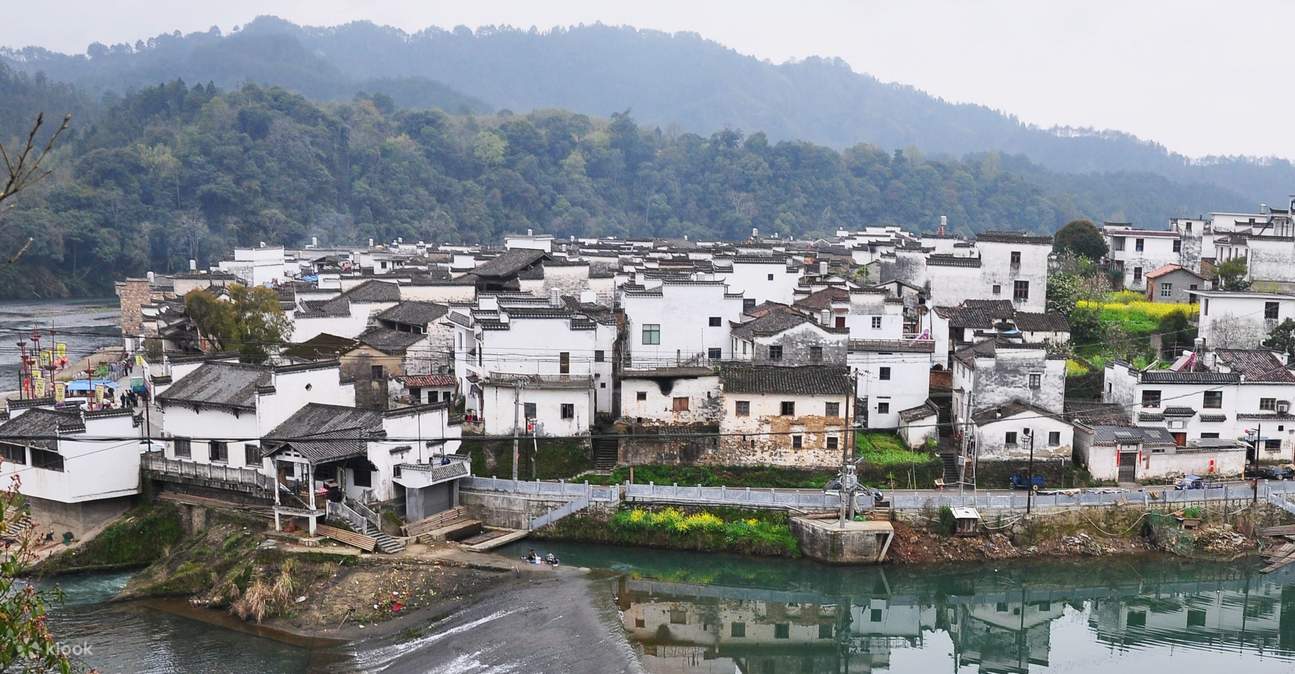
Likeng Village.
Entry Fees and Hours
Admission:
There is an entrance fee to Likeng, typically around RMB 60. However, prices may vary by season or events, so it’s advisable to check before your visit.
Hours:
Likeng Village is open 24 hours a day, allowing you to explore at your leisure. However, visiting during daylight hours is recommended to fully appreciate the village’s charm and the intricate details of its architecture.
What to Expect
Upon entering Likeng, be prepared to be transported back in time. The village is lined with ancient residential buildings showcasing the distinctive Hui architectural style, characterized by white walls, black tiles, and intricate wooden carvings.
Key Attractions:
– Ancient Architecture: Explore the beautifully preserved homes of wealthy merchants, each with unique architectural features and historical significance.
– Local Crafts: Engage with local artisans and discover traditional crafts. The village is known for its unique handmade products which make for great souvenirs.
– Scenic Views: The surrounding hills and canola fields provide stunning landscapes, especially in the spring and autumn.
Things to Do
- Photography: With its picturesque scenery and historic buildings, Likeng is a photographer’s paradise. Don’t forget your camera!
- Culinary Experience: Enjoy authentic local cuisine at one of the many eateries in the village. Many establishments offer traditional meals made with fresh, local ingredients.
- Cultural Tours: Consider joining a guided tour to learn more about the history and architecture of the village, offering insights that enhance your experience.
Tips for a Memorable Visit
- Wear Comfortable Shoes: Prepare for walking and exploring the cobblestone streets and pathways. Comfortable footwear is a must!
- Stay Hydrated: Bring water, especially if you plan to walk or hike in the surrounding areas.
- Explore Off-Peak Hours: To avoid crowds, visit early in the morning or later in the afternoon.
Nearby Attractions
After exploring Likeng Village, consider visiting other nearby sites:
– Huangling Village: Known for its breathtaking views and historical significance, it’s a short bus ride away.
– Wuyuan Museum: Offers further insights into the region’s rich cultural heritage.
Final Thoughts
Likeng Village is more than just a destination; it’s a journey into the heart of Chinese history and culture. Whether you’re wandering through ancient lanes, savoring local delicacies, or mingling with artisans, Likeng promises an unforgettable experience. Plan your visit carefully to make the most of your time in this charming ancient village. Happy travels!
Tickets: Prices, Booking, and Tips
Navigating Your Visit to Likeng Village: Essential Ticket Information
When planning your visit to the enchanting Likeng Village (婺源李坑), a destination renowned for its stunning scenery and rich historical fabric, understanding the ticketing process is crucial. This guide will help you navigate ticket prices, booking options, and helpful tips for a hassle-free experience.
Ticket Prices
- Entrance Fee: The cost for entering Likeng Village is approximately RMB 60 (about $9 USD). This fee helps maintain the village and its historical sites.
- Discounts: Keep an eye out for any potential discounts, especially for students or seniors, as some local tour operators might offer reduced rates.
Booking Options
- On-Site Purchase: Tickets can be purchased directly at the entrance of the village. It’s advisable to arrive early in the day to avoid long lines, especially during peak tourist seasons.
- Tour Packages: For a more comprehensive visit, consider booking a tour package that includes Likeng Village. Many local operators offer day trips that combine visits to nearby attractions, such as the picturesque Huangling and other ancient villages in Wuyuan County.
- Example Packages:
- Private Day Tour to Wuyuan Huangling and Likeng: Approx. $299 for a full-day experience, including transportation and a guided tour.
- 1-Day Mt. Huangshan Tour with Optional Hongcun & Xidi Village: Starting from $118.
Tips for a Memorable Visit
-
Timing Your Visit: The best times to visit Likeng Village are during the spring when the canola flowers bloom or in autumn for breathtaking foliage. This not only enhances your photographs but also provides a more vibrant atmosphere to experience the village’s charm.
-
Transportation: If you are traveling from downtown Wuyuan, a direct bus to Likeng costs about RMB 7 (around $1 USD). Alternatively, for those seeking adventure, a scenic walk to the village can be a rewarding experience, although it requires a bit of stamina.
-
Explore the Surroundings: Beyond the village itself, take the time to explore nearby attractions such as the Huanglian Temple and Mt. Xiangyun Scenic Resort. These sites provide a deeper understanding of the region’s cultural and historical significance.
-
Cultural Insights: Engage with local artisans and shopkeepers to learn about the traditional crafts and the history of the village. This interaction enriches your visit and supports the local economy.
-
Stay Overnight: If time allows, consider an overnight stay to fully immerse yourself in the village’s serene atmosphere. Several homestays and guesthouses offer a cozy retreat, complete with regional cuisine.
With its picturesque landscapes and rich heritage, Likeng Village offers an unforgettable glimpse into China’s past. By planning ahead with these ticketing insights and tips, you can ensure a smooth and enjoyable journey through this charming ancient village.
How to Get There: A Complete Transportation Guide
Getting to Likeng Village (婺源李坑) is an adventure that begins with your journey to Wuyuan County, nestled in the picturesque Jiangxi Province of China. This charming village is renowned for its well-preserved ancient architecture and breathtaking landscapes, making it a must-visit for anyone keen on exploring Chinese history and culture. Here’s how you can reach this enchanting destination.
Reaching Wuyuan County
By Air
The nearest major airport to Wuyuan is Jiujiang Lushan Airport (JIU), approximately 100 kilometers away. From the airport, you can take a taxi or arrange for a pre-booked transfer to Wuyuan County.
Alternatively, Nanchang Changbei International Airport (KHN), located about 200 kilometers from Wuyuan, offers more international flight options. From Nanchang, you can take a high-speed train to Wuyuan Railway Station.
By Train
Wuyuan Railway Station is well-connected by high-speed trains from various cities:
- From Nanchang: High-speed trains run frequently, taking about 2 hours.
- From Hangzhou: Expect a journey of approximately 3.5 hours.
- From Shanghai: Direct trains are available, usually taking around 6 to 7 hours.
Upon arrival at Wuyuan Railway Station, you can catch a local bus or taxi to the village.
By Bus
For those already in nearby cities, long-distance buses are a convenient option:
- From Nanchang: The bus takes about 3-4 hours.
- From Huangshan (Tunxi): Expect a 3-4 hour journey, with several direct buses available throughout the day.
Buses typically arrive at the Wuyuan Bus Station, where you can find local transport options to Likeng Village.
Getting to Likeng Village
Once you arrive in Wuyuan, reaching Likeng Village is straightforward, although it requires a bit of walking or a short bus ride.
By Local Bus
Direct buses from Wuyuan Bus Station to Likeng run frequently, with a ticket costing about RMB 7. The bus journey will take roughly 30-40 minutes. Be mindful of the bus schedule, as services may vary throughout the day.
By Taxi
Taxis are readily available and can take you directly to the entrance of Likeng Village. This option is more comfortable and convenient, especially if you are traveling with luggage or in a group. The fare from Wuyuan downtown to Likeng typically costs around RMB 60-80.
On Foot
For the adventurous traveler, walking to Likeng can be a delightful experience. The distance from downtown Wuyuan is about 16 kilometers. Although it may take a couple of hours, you will be rewarded with the scenic views of the surrounding countryside.
Entrance to Likeng Village
Keep in mind that vehicles cannot access the village itself. You will need to park at the designated area and walk approximately 20 minutes to reach the village center. The entrance ticket costs around RMB 60, which provides access to the village’s attractions and stunning scenery.
Final Tips
- Best Time to Visit: Spring (March to May) and autumn (September to November) are ideal for experiencing the vibrant canola flower fields and the picturesque fall foliage.
- Guided Tours: If you prefer a structured visit, consider joining a guided tour that often includes transportation, meals, and a comprehensive exploration of the village’s historical significance.
- Cash: While some places accept cards, it’s advisable to carry cash, as small shops and vendors might not have card facilities.
With this guide in hand, you’re ready to embark on your journey to Likeng Village, where history and natural beauty converge in a truly unforgettable experience.
Local Cuisine and Accommodation Nearby
When visiting Likeng Village (婺源李坑), immersing yourself in the local cuisine and finding the right place to stay can enhance your cultural experience in this picturesque part of Jiangxi Province. Here are some recommendations that will help you savor the flavors and comfort of this ancient village.
Culinary Delights
1. Local Specialties
– Wuyuan Bamboo Rice (婺源竹筒饭): This unique dish involves glutinous rice cooked inside bamboo tubes, imparting a subtle aroma and flavor. Often served with various ingredients such as mushrooms or pork, it’s a must-try for any traveler seeking authenticity.
– Fresh River Fish (鲜河鱼): Sourced from the nearby streams, the fish is often prepared simply with ginger and scallions, allowing the natural flavors to shine through. Enjoy it grilled or steamed for a delightful taste of the region.
– Pickled Vegetables (腌菜): Locally pickled vegetables are a staple side dish that complements many meals. Their tangy flavor provides a refreshing contrast to heartier dishes.
2. Recommended Dining Spots
– Li’s Family Restaurant (李家餐馆): Known for its warm hospitality and traditional recipes, this family-run establishment serves a variety of local dishes, including the famous bamboo rice and river fish.
– Village Eatery (村落小吃): This cozy eatery offers a casual dining experience with a menu filled with local snacks and meals. Try their homemade dumplings and seasonal vegetables, which are always fresh and flavorful.
– Wuyuan Old Teahouse (婺源老茶馆): After a day of exploring, unwind with a cup of locally sourced tea while nibbling on traditional pastries. It’s an ideal spot to relax and soak in the village’s atmosphere.
Comfortable Stays
1. Homestays
– Likeng Homestay (李坑民宿): Experience authentic village life in this charming homestay. Guests can enjoy cozy rooms with traditional decor, and the host often prepares meals using fresh, local ingredients.
– Ancient House Inn (古宅客栈): Nestled within the historic architecture of Likeng, this inn offers a glimpse into the village’s past. With comfortable beds and a lovely courtyard, it’s perfect for travelers seeking a tranquil retreat.
2. Guesthouses
– Wuyuan Scenic Guesthouse (婺源风景客栈): Located just a short walk from Likeng, this guesthouse provides a comfortable stay with modern amenities. The friendly staff can help arrange tours of the surrounding countryside.
– Golden Canola Guesthouse (金色油菜花客栈): Situated near the famous canola flower fields, this guesthouse is ideal for photography enthusiasts and nature lovers. Enjoy breathtaking views and a hearty breakfast to fuel your day of exploration.
Conclusion
In Likeng Village, enjoying the local cuisine and finding the right accommodation are integral to experiencing the rich history and culture of this ancient village. From delightful bamboo rice to comfortable homestays, you’ll find that the hospitality and flavors of the region will create lasting memories of your visit.
Frequently Asked Questions
Frequently Asked Questions About Likeng Village
1. What is Likeng Village known for?
Likeng Village is celebrated as one of the best-preserved ancient villages in China, showcasing stunning Hui-style architecture and picturesque landscapes. Visitors are often enchanted by its historical charm, beautiful canola flower fields, and the serene creek that flows through the village.
2. How do I get to Likeng Village?
Likeng Village is located approximately 16 km from Wuyuan downtown. You can reach the village by taking a direct bus from the coach station, which costs around RMB 7. Alternatively, adventurous travelers may choose to walk, although it’s a lengthy journey of about 20 km.
3. Is there an entrance fee to visit Likeng Village?
Yes, there is an entrance fee for Likeng Village, typically around RMB 60. However, it’s advisable to check for any updates on pricing or possible discounts before your visit.
4. What is the best time to visit Likeng Village?
The ideal time to visit Likeng Village is during the spring (March to May) when the canola flowers bloom, painting the landscapes in vibrant yellow hues. Autumn (September to November) is also a great time for trekking and enjoying the changing foliage.
5. Are there accommodations available in or near Likeng Village?
Yes, there are various accommodation options available, including homestays and guesthouses within the village and nearby areas. Staying overnight allows you to experience the village’s tranquil atmosphere after day-trippers have departed.
6. What activities can I do in Likeng Village?
Visitors can enjoy exploring the ancient architecture, taking leisurely walks along the creeks, and engaging with local artisans in their unique shops. Guided tours are also available, providing insights into the history and culture of the village, including the stories behind the intricate wooden carvings of the mansions.
7. Is Likeng Village very commercialized?
While Likeng Village does attract a significant number of tourists, which has led to some commercialization, it retains its historical charm. Visitors may find shops selling local crafts and snacks; however, the picturesque scenery and cultural heritage remain intact.
8. Can I find local food in Likeng Village?
Absolutely! Likeng Village offers a variety of local cuisine options. You can find small eateries and vendors selling traditional dishes, and many homestays provide authentic meals featuring local ingredients, allowing you to savor the flavors of Jiangxi province.
Final Thoughts on Your Trip
As you prepare to bid farewell to Likeng Village, reflect on the rich tapestry of experiences that this enchanting destination has woven into your journey. Nestled in the heart of Jiangxi province, Likeng is not merely a picturesque village but a portal into the profound history and vibrant culture of China.
A Journey Through Time
Walking through Likeng’s ancient alleys, surrounded by well-preserved Hui architecture, is like stepping back into a different era. The intricately carved wooden archways and ancestral homes whisper tales of the wealthy merchants who once thrived here. Each corner of the village offers a glimpse into the lives of those who shaped the region’s past, from their struggles to their triumphs.
Nature’s Bounty
The breathtaking landscapes surrounding the village enhance its allure. The stunning canola flower fields, especially vibrant in spring, create a spectacular backdrop that captures the essence of rural China. Whether you find yourself strolling along the creek or exploring the local artisan shops, the harmonious blend of nature and culture is sure to leave a lasting impression.
Embrace the Experience
While some aspects of Likeng may feel commercialized, it is essential to embrace the unique charm and stories that this village has to offer. Engage with the local artisans, savor the traditional cuisine, and immerse yourself fully in the tranquil atmosphere.
Final Reflections
As you depart Likeng, carry with you not just memories of its beauty, but also an appreciation for the cultural heritage that permeates every stone and stream. This village, with its rich history and scenic vistas, invites travelers to rediscover the essence of China—a land where ancient traditions continue to thrive amidst the changing tides of modernity.
May your travels inspire you to seek out more hidden gems and stories as you explore the wonders of this incredible country. Safe travels!